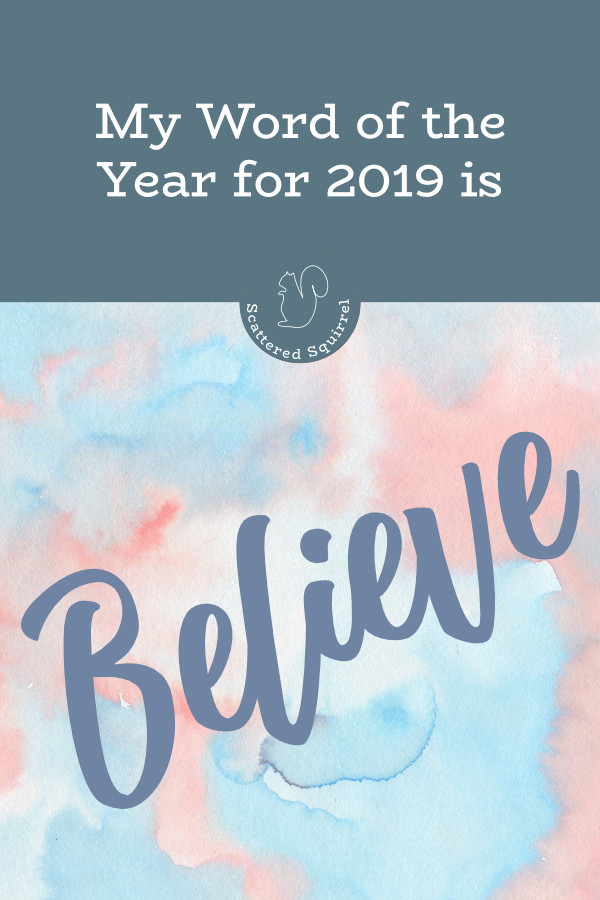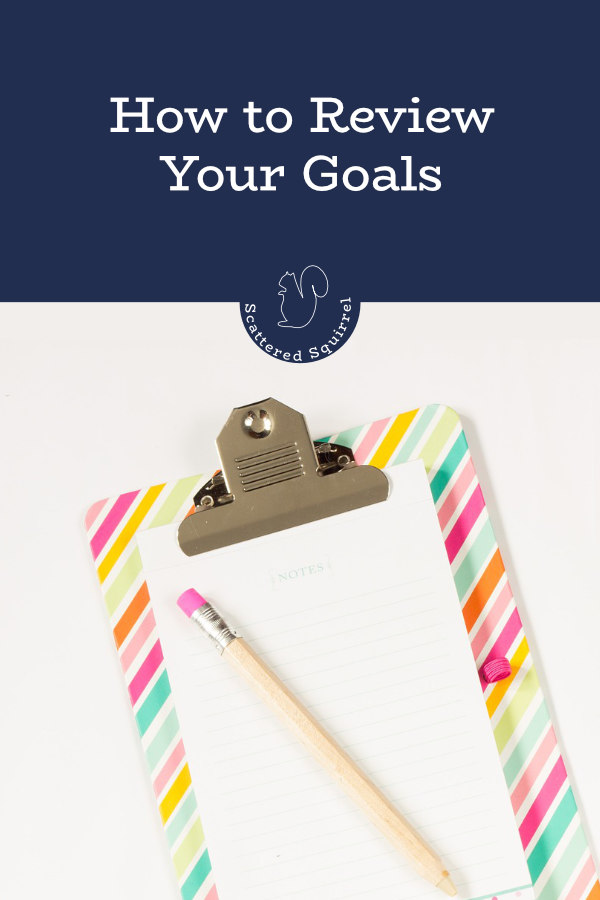How to Use Your Planner to Actually Achieve Your Goals!
*This post contains affiliate links. Please see our disclosure policy for more information.*
When it comes to creating and setting goals for ourselves it can sometimes be easy to forget about them over time. Sure we start the new year off with grand intentions. We take the time to write our goals down, step by step. We even give them a deadline. We are feeling pumped and full of energy, bursting with possibilities. This is going to be our year to shine! And then the days start slipping by as we move on with real life, and next thing we know it’s June and that feeling of “Yes! I can do this!” has faded into “Why did I think I could do that?” You see, setting our goals is the easy part. What so often gets forgotten is that we have to check in with our goals. We need to review them often. We need to make sure we’re moving forward on them. The good news, is that we already have the perfect tool to help us with this one. So today, I thought I’d share with you how I use to my planner to help me reach my goals.
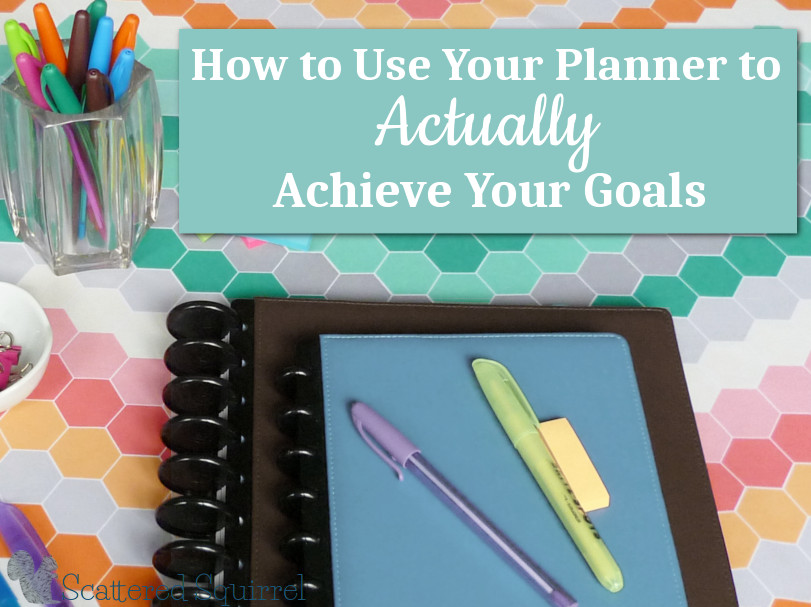
How to Use Your Planner to Actually Achieve Your Goals
Goal setting used to be an exercise in frustration for me. I would do everything right. I made specific goals, the were measurable, assignable, realistic, and time specific. I wrote them down, created a plan to reach them, and yet, some how, somewhere along the way they would fall by the way side. It took me a long time of trial and error, frustration and feeling like a failure before I figured out that I was missing something. Life happens! The day-to-day grind creeps in, and soon we’re busy and things like goals get forgotten in the midst of laundry and little league. Or at least they would for me. Then one day I realized that I had the perfect tool to help my goals keep from getting lost in everyday life – my planner! Over the years I’ve fine tuned my system and it’s been working really well for me.
Mark Your Deadlines
Whenever you set a goal, it is always important to give it a deadline. Long term goals can be sort of tricky this way, you know you want to accomplish them in the future, but an actual date for the finish isn’t possible to narrow down. However, if you set supportive small term goals or steps to take to get to reach that long-term goal, give those a deadline. Once you have a deadline for your goal, write it in your planner. I use my monthly calendar pages for this, but you could enter them into your weekly or daily planner if you want too. I used to use a specific coloured highlighter for these, but now I am serious loving using Washi Tape (aff) for this. I put a strip across the calendar day and write the name of my goal on it.
Marking your deadlines is a crucial part of achieving your goals. It is a tangible reminder that this is something you really want to do, and having that deadline in your calendar will help you create your plan of attack for moving forward with it.

Plan to Check In on Your Progress
Now that you have your deadlines marked down, it’s time to set some check-in dates. Scheduling time to go take stock of where you are on your journey to achieving your goals is a great way to help keep yourself on track. These sessions don’t have to take a lot of time, they’re just meant to be a way to check your progress. Think of them as pauses in your journey to double check your map and compass to make sure you’re really on the right path. I like to break my timeline into quarters, so if one of my goals has a deadline of December 31st, I’ll schedule check-ins on March 31st, June 30th, and September 30th. For each check in I:
- take out my goal setting worksheets for that goal
- check off anything I’ve completed that I might have forgotten to check off
- make notes of anything that I want to focus on now
- make any changes to the steps or supportive small goals that I feel need to be made
- add any new steps or tasks that I think will help me get there.
You can spend as much or as little time as you want on these, the important thing is that you make the time to check in and see where you are at. Use your planner and schedule these times in. Your goals are important, they deserve some time, more importantly, you deserve to spend time on them. After all, you wouldn’t have made them if they didn’t matter to you right?
Schedule Recurring Tasks
The next step is scheduling in recurring tasks. These are those things you need to do on an ongoing basis to meet your goal. To use our Europe tour as an example, one of the recurring tasks might be setting aside a certain amount of money into our savings account each payday. I would write the amount we need to put away and what account it goes into, on each payday in the calendar year. By taking the time to write this down all at once, I negate the risk of forgetting about it when I do my weekly or monthly planning sessions.
Maybe one of you goals is to make more healthy eating choices, and one of the ways you’re going to do this is by choosing to have one meatless meal a week. Pick a day each week, and write a note in your calendar to remind yourself of that. Maybe your goal is to finish writing your novel and one of your steps is to spend a certain amount of time on the weekend writing. Write it down, for EVERY WEEK until your deadline. That’s the key, schedule these tasks from now until your deadline. I know it takes time, but taking that time now, means you don’t have to worry about it later.
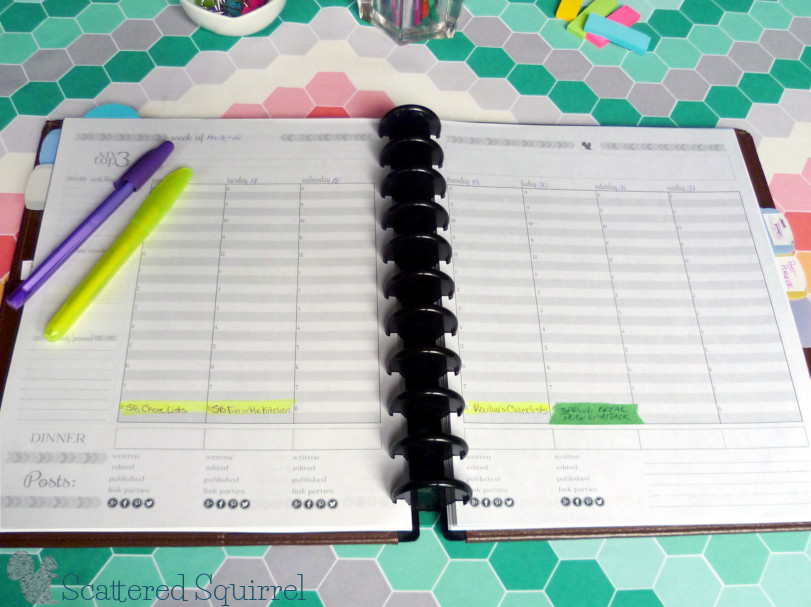
Make Your Goals Part of Your Weekly and Monthly Planning Sessions
There are always steps we need to take that don’t fit into the recurring section. You can approach these in two ways.
- Set a deadline for them and follow steps one and two above
- Add your goals into your weekly and monthly planning sessions.
Making your goals part of your weekly and monthly planning sessions is a great way to keep yourself moving forward on them. I begin this process with my monthly planning session. I start by taking a look at what I finished the current month and mark it off on the corresponding worksheet. Whatever didn’t get completed this month gets scheduled into next month right away. Then I take a look at my short terms goals to determine which ones I need to focus on, and what needs to be done for them, and I schedule those into the month as well. Now I have a rough plan for how I’m going to tackle my goals during the upcoming month.
Sundays are my weekly planning days, and as part of my planning session I focus on making time to work on moving forward on my goals. I start by looking at the past week and schedule anything that didn’t get completed, and I try to get those done at the beginning of the week. Then I look at my monthly calendar and see what I had planned and schedule that in too. If I don’t know if I can actually fit everything into my week, I make a note of what I didn’t schedule so that if I end up with some time, or finish something early, I can fit those extra tasks in.
Set Aside Time for Evaluation
Let’s face it, life changes, and with it, so do our priorities, ambitions and dreams. So it’s important to set aside some time to evaluate your goals. I usually set aside time in May and November to sit down and evaluate my goals. This step alone has been such a crucial one for helping me achieve my goals. Working for something that no longer matters to us can be really draining. Never be afraid to change your goals. They should be things that matter to you or hold importance in your life. If they no longer meet that criteria, it’s time to change things up. There are a few questions you can ask yourself as you evaluate your goals.
- is this something that still matters to me?
- is this something I still want or need to do?
- is this a supportive goal for my long-term goals? If so, is it crucial, or just something I thought I needed to do?
- is this helping me get where I want to go?
- do I really want this or is this something I felt like I should do?
Use your answers to decide if you’re going to keep on moving forward with your original plan, if you’re going to make changes to you original plan, if you’re going to put that goal on hold for a little bit, or if you’re going to completely change or even ditch your goal. Use these evaluation times to make course corrections on your journey to achieving your goals. If your goals aren’t going to be moving you in the direction you want to go in, change them or set them aside. Maybe you realize that some of the steps you thought you needed to take can be skipped? For example: One of the steps you had written down to help you write your novel was to create setting boards so you had a visual of the places you wanted to use in your story. You started this by making some Pinterest boards, but haven’t yet printed things out to make the boards they way you wanted. Now you’re half way through writing your novel and you realize those Pinterest Boards are working just fine. Eliminate the make setting boards step. You don’t really need to do it, and it’s only going to take time away from something else.
Remember it is absolutely ok to let go of a goal. To use the Europe trip as an example, seven years from now we could decide that we don’t want to go to Europe like we had planned. Perhaps we would be happier buying a sail boat and sailing around the world. Holding onto the goal of going Europe would no longer make sense for us, and I would gladly toss it aside and work towards a new one.
Goals are supposed to the road maps that lead us to where we want to go, don’t let yourself be led astray by ones that no longer make sense to you. And don’t allow your journey to take longer or be harder than it needs to be. Use your planner or whatever works for you, to keep them from being lost in the everyday shuffle of life. These simple steps have made a world of difference on my own journey to achieving my goals. I hope it does the same for you!
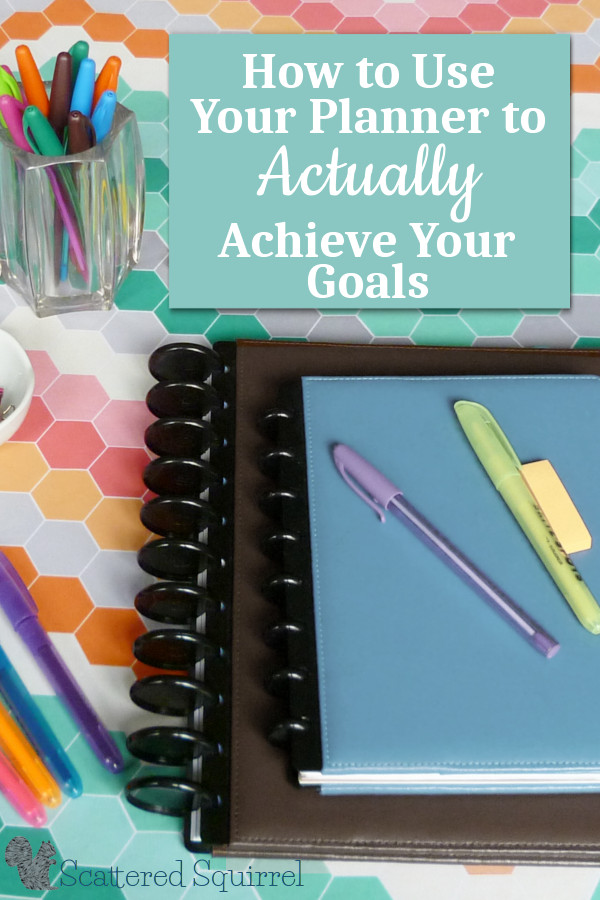
Do you use your planner to track your goals or do you have a different way that works for you? I’d love to hear from you!
~Happy Planning!~
Linking up at these great parties!

